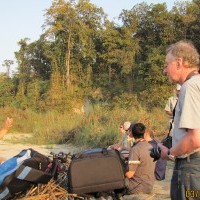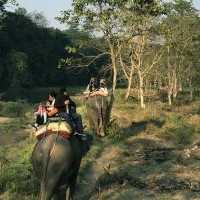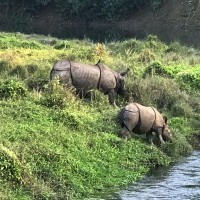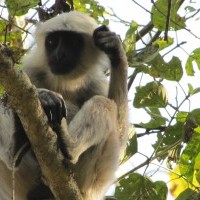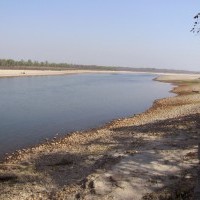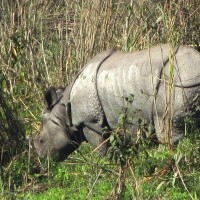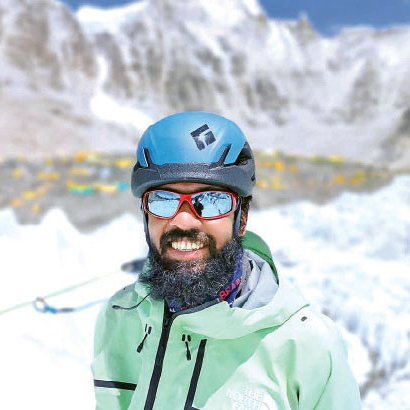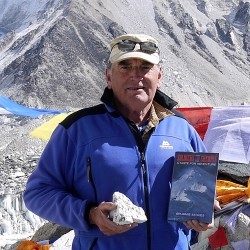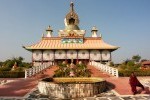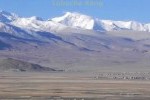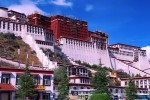Bhaktapur: Also known as Bhadgaon, it is situated at an altitude of 1401 m, is a home to medieval art and architecture and was the site for Burtoluchhi’s Little Buddha. The urban city covers an area of 4 sq. miles. Shaped like a conch-shell, Bhaktapur meaning city of Devotees, pottery and weaving are its traditional industries. Bhaktapur, essence of the Newari City, 14 km east of Kathmandu is Nepal’s greatest treasures.
Bhaktapur Durbar Square is a conglomeration of pagoda and shikhara-style temples grouped around a fifty-five window palace of brick and wood. The square is one of the most charming architectural showpieces of the Valley as it highlights the ancient arts of Nepal. The golden effigies of kings perched on the top of stone monoliths, the guardian deities looking out from their sanctuaries, the wood carvings in every place-struts, lintels, uprights, tympanums, gateways and windows-all seem to form a well-orchestrated symphony.
Thimi:Thimi is a farming town situated 8 km east of Kathmandu on the way to Bhaktapur. Exquisite temples and other religious shrines dot its streets. It is known for its artistic masks and earthen pots, often seen spread out on the streets to dry in the sun. It can be called a traditional pottery locality with almost 80% of the population still involved in pottery. Handspun cotton cloth is another Thimi specialty.
Kathmandu Durbar Square: Durbar square classic tour takes you to the famous places that have housed kings of different dynasties and temple-scapes representing the finest expamples of Hindu and Buddhist architectures.
Some of the important monuments to be seen here are:
- Taleju temple- tallest of all structures built by king Mahendra Malla in 1549 A.D.
- Jagannath temple- built in the 16th century, known for fascinating erotic figures carving I the wooden struts eaves.
- Kal Bhairav- one of the largest stone idol in Kathmandu representing the terrifying aspects of Shiva.
- Statue of King Pratap Malla in praying gesture to Digu Taleju the royal family deity right across.
- Kumari Ghar- 17th century Kumari temple, an example of the highly developed Nepalese temple craft.
- Kasthamandap- built from the timber of a single tree. The Kathmandu City derives its name from Kasthamandap.
Besides this other fascinating part of this palace complex is the towering Nautale Durbar overlooking the beautiful cityscape and the vast Basantapur square where Prithivi Narayan Shah built mansion to commemorate his victory in 1768 A.D. This building complex is known for the most intricately carved wooden doorways roof struts and massive lattice windows full of mythical figures.
Swayambhunath: One of the world’s most glorious, ancient, enigmatic and the holiest of Buddhist Chaityas, dating back more than 2000 years. Situated on a hillock Swayambhunath, literally “the Self-Created or Existent”, is a mosaic of small stupas and pagoda temple contributed over time by the succession of kings and noblemen. The main structure of the stupa is made of a solid hemisphere of brick and clay, supporting a lofty conical spire and capped by pinnacle of copper gilt. Painted on the four sides on the base of the spire are the “All Seeing Eyes” of Lord Buddha. The main features of Swayambhunath in brief are “The Five Buddhas.”






